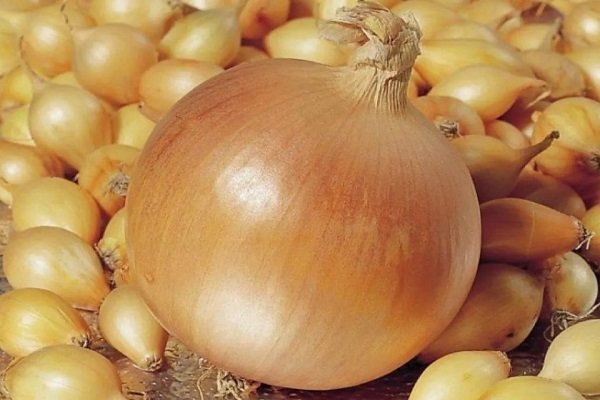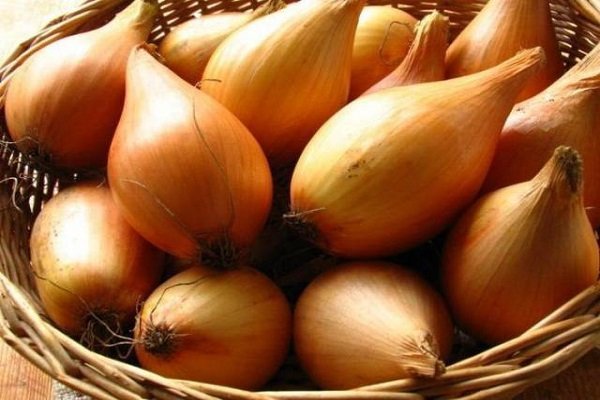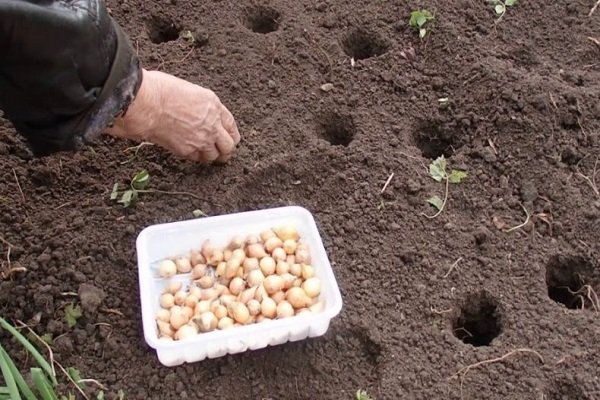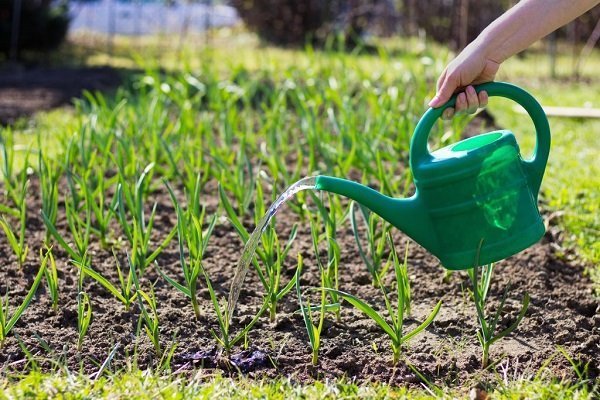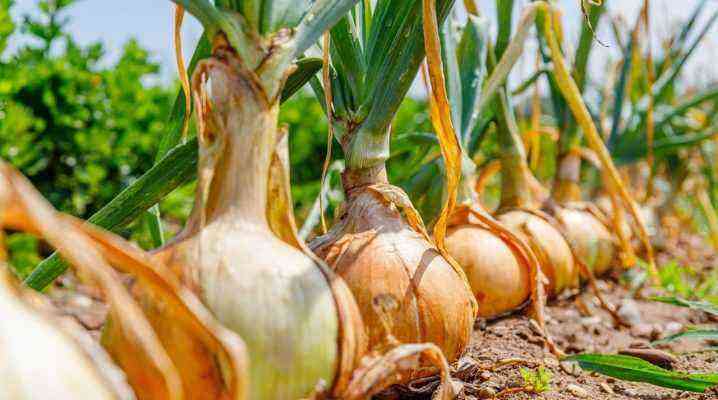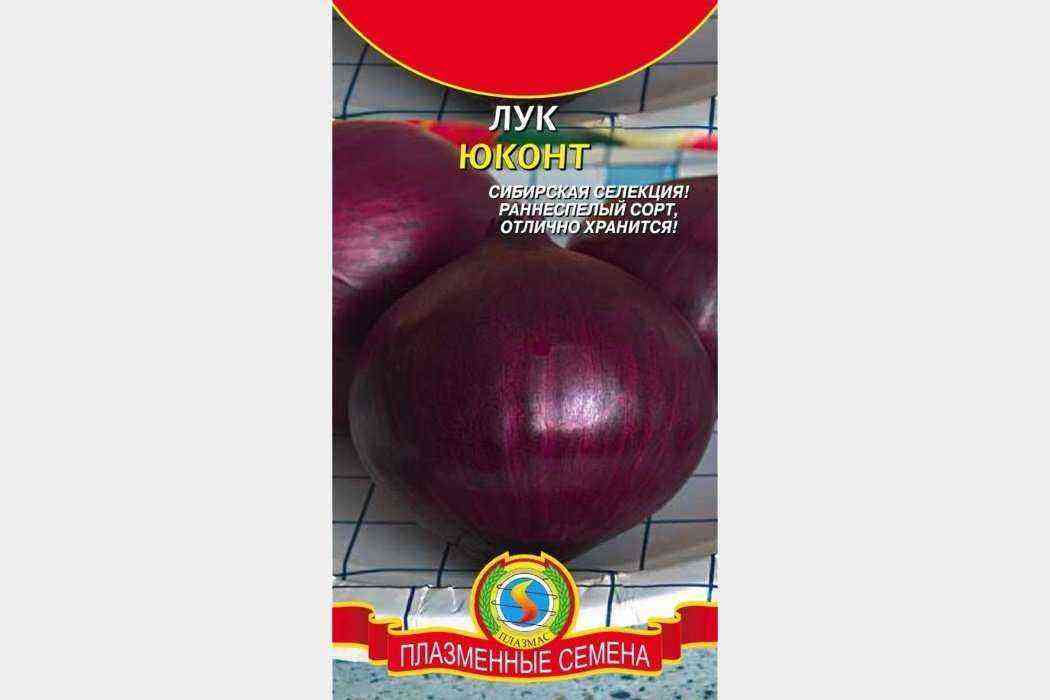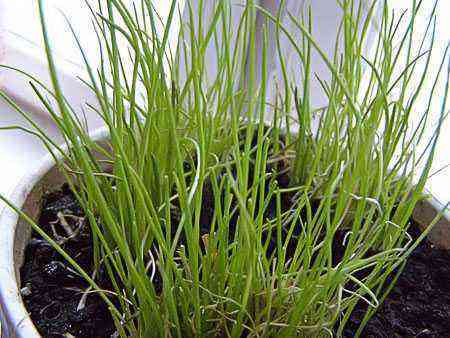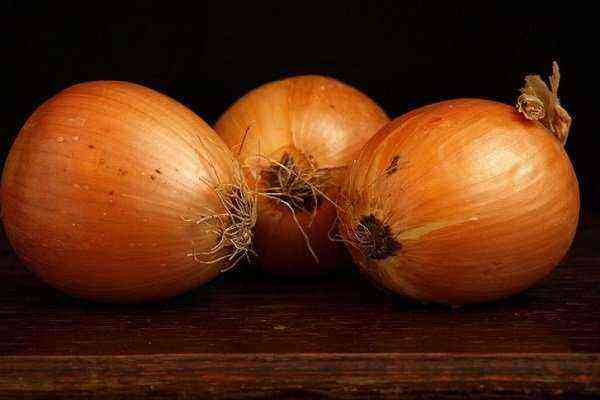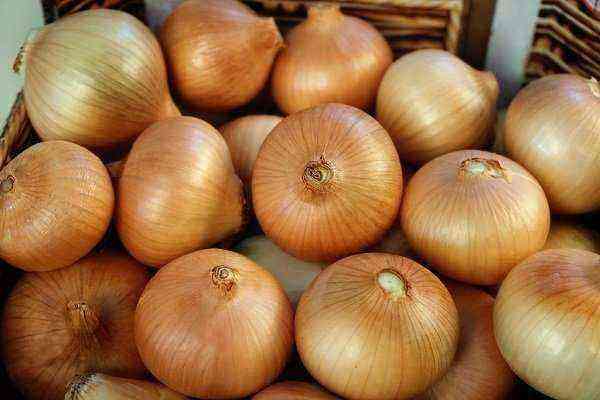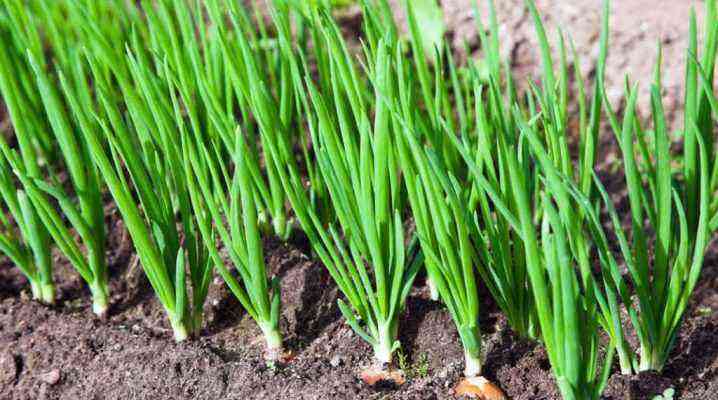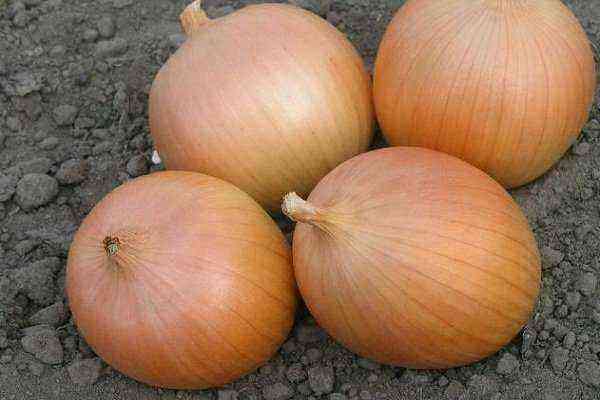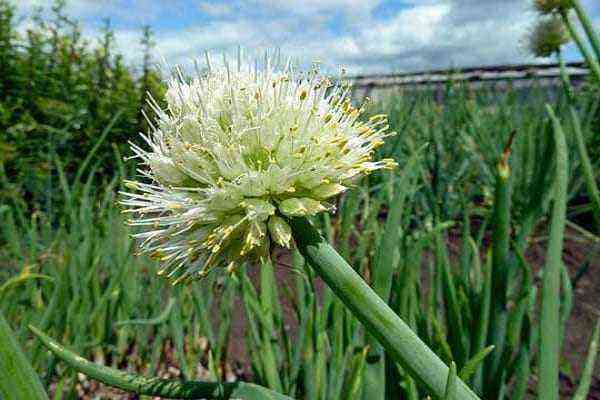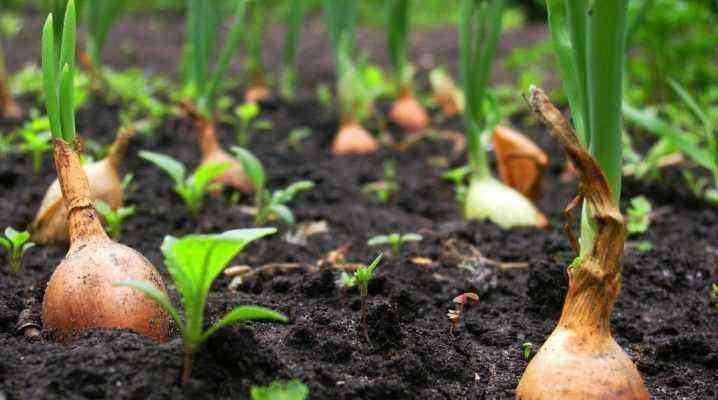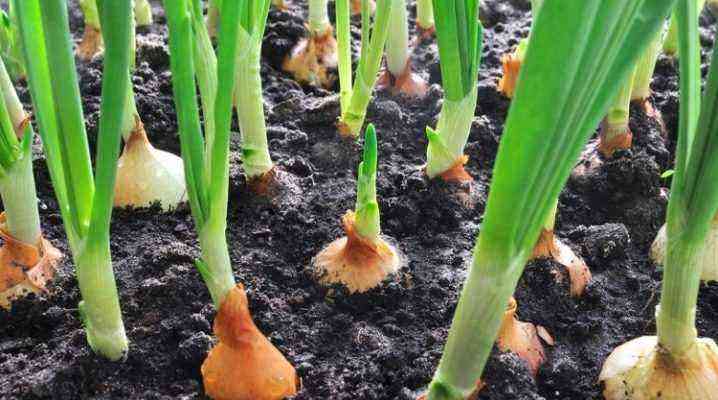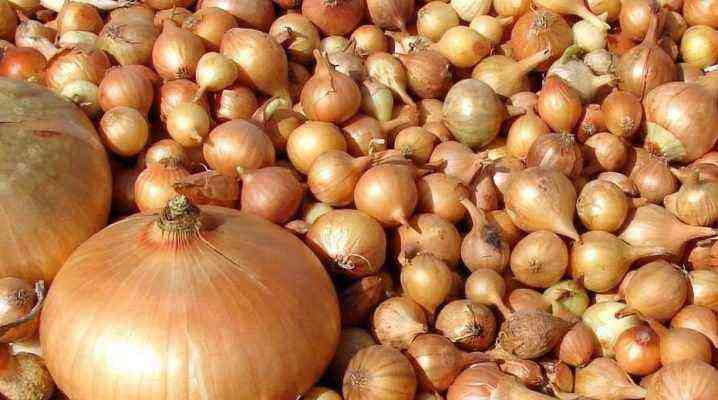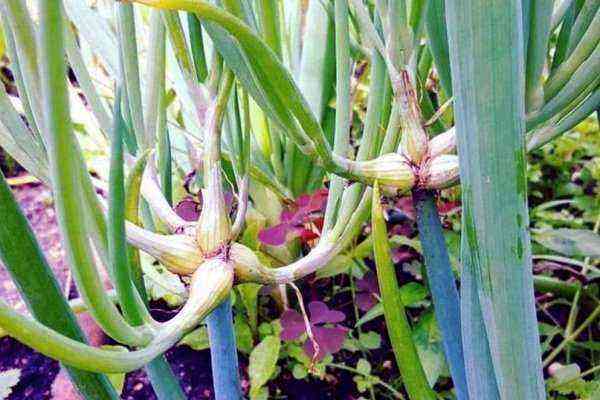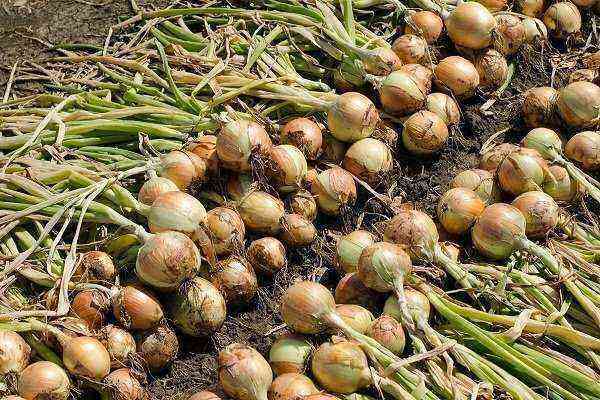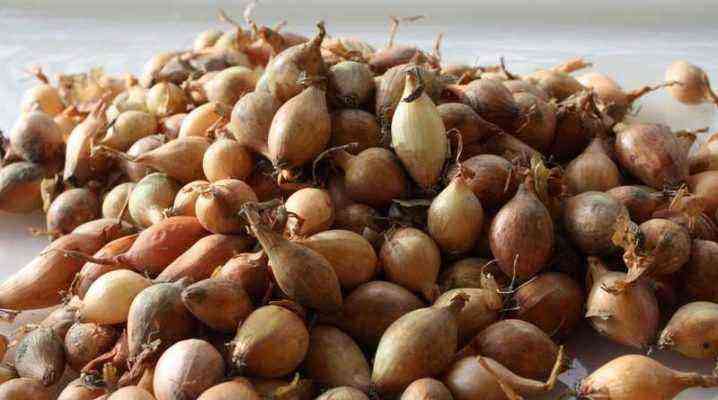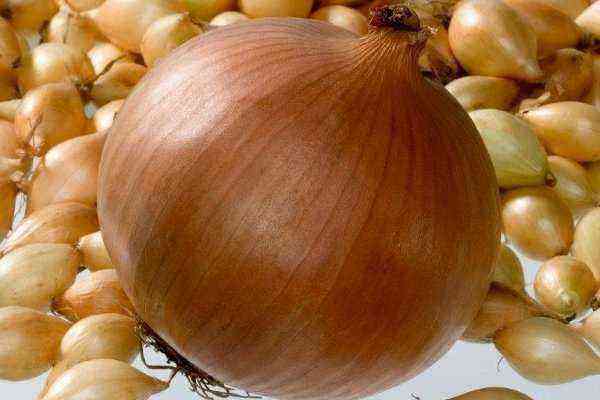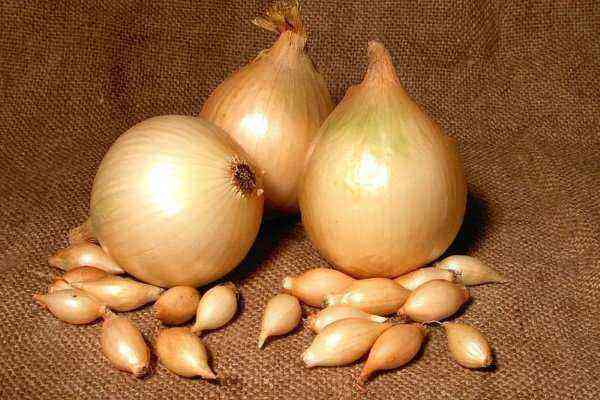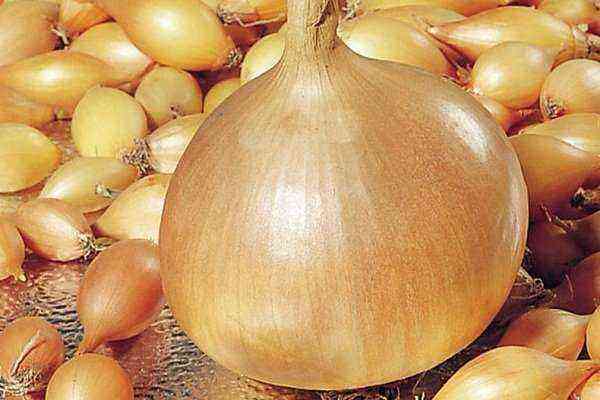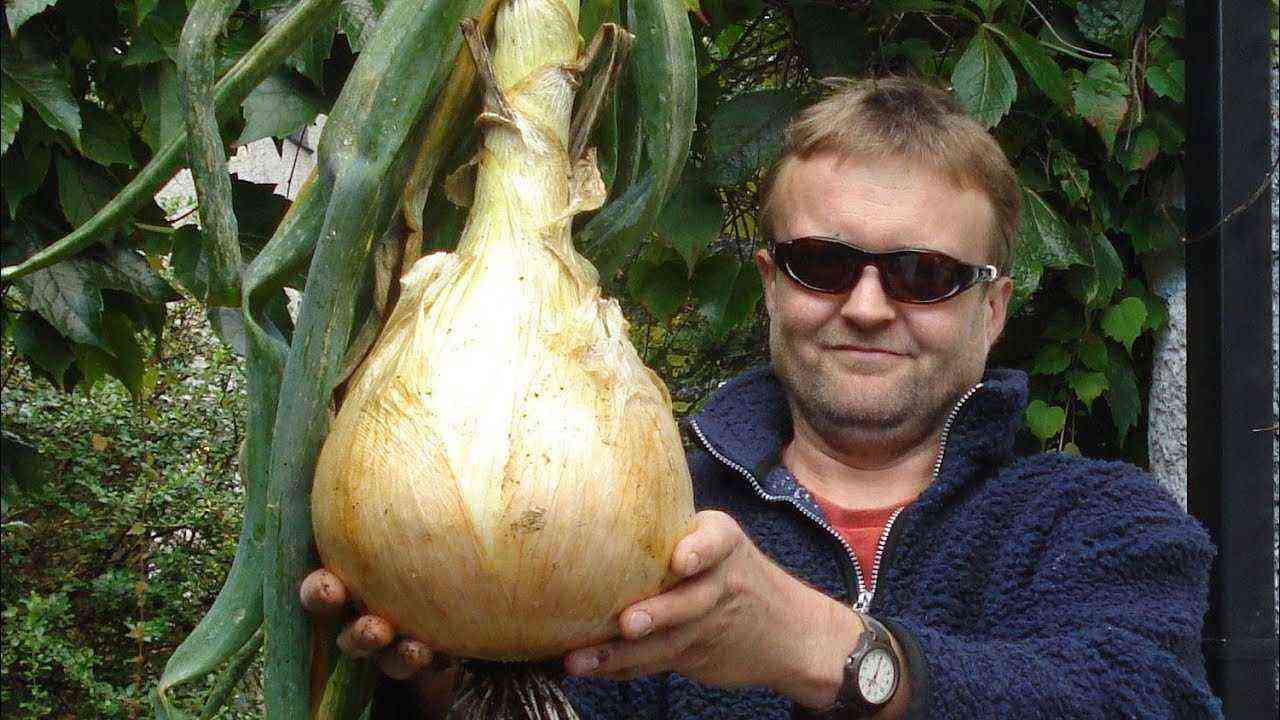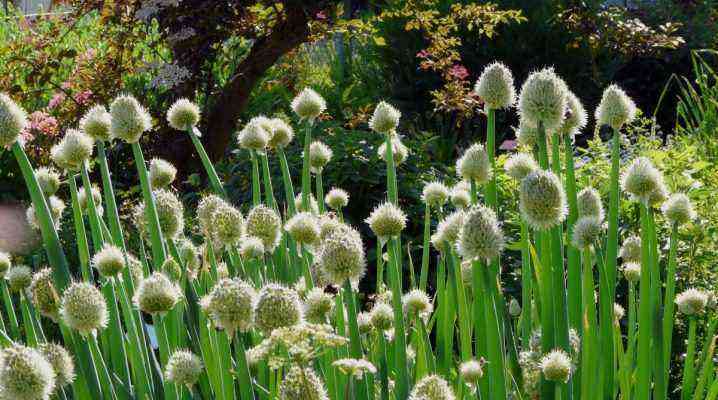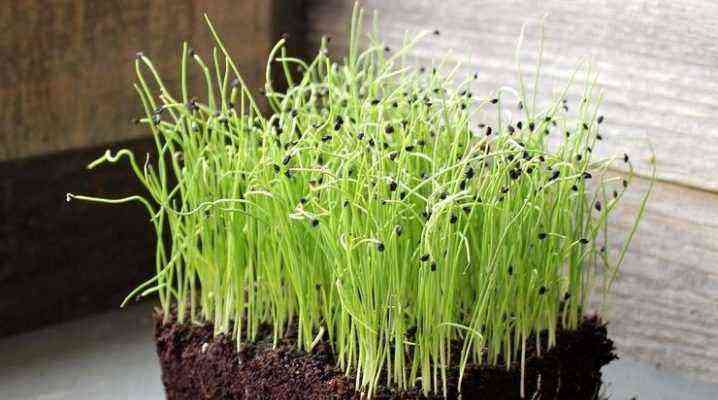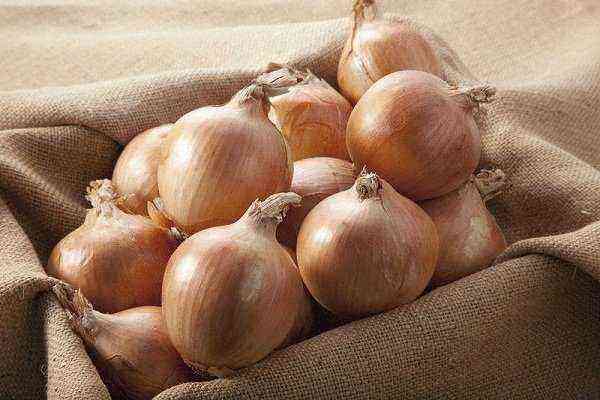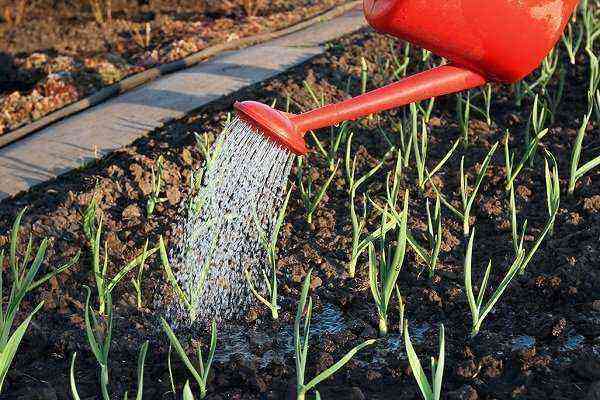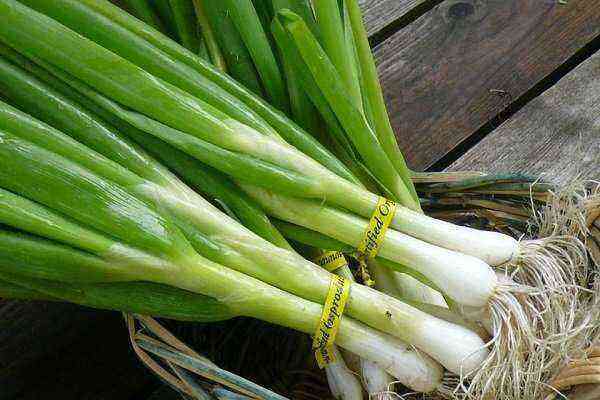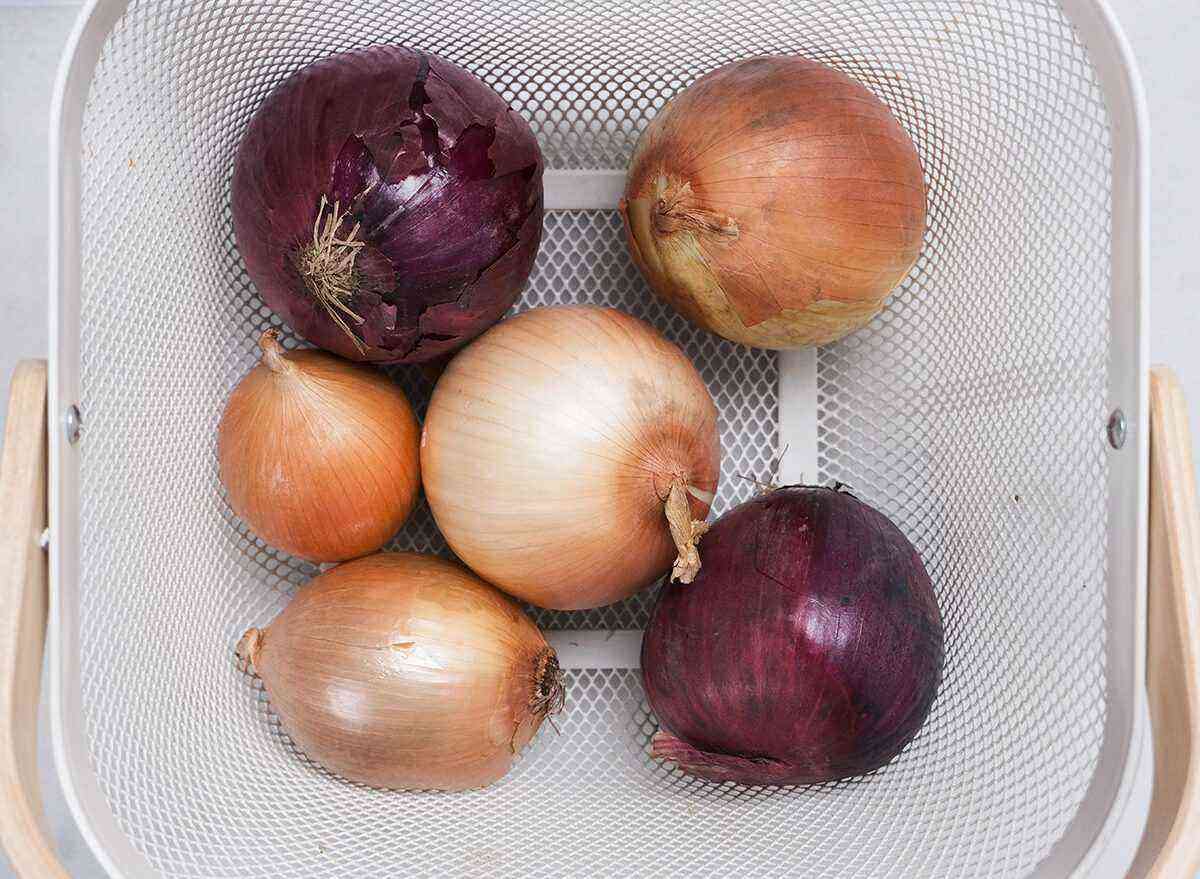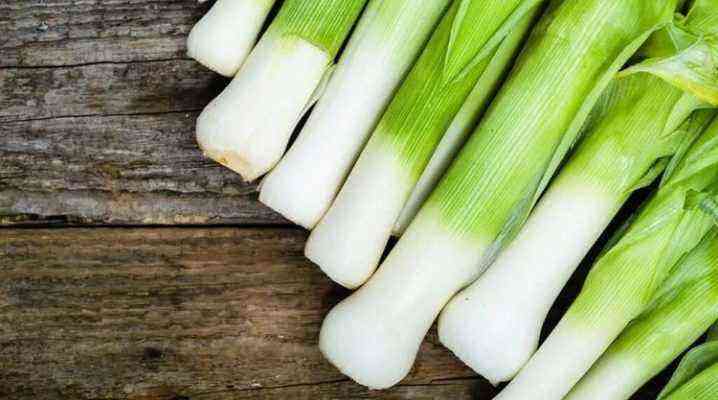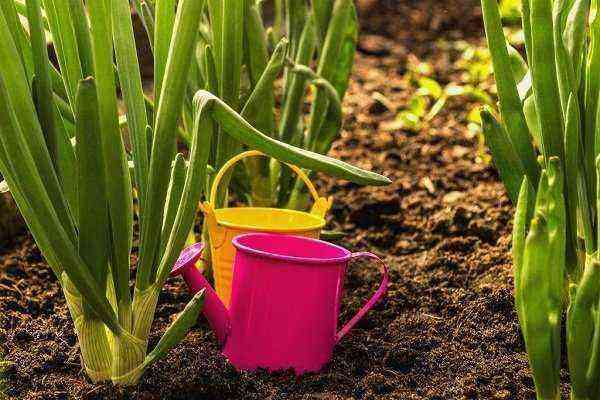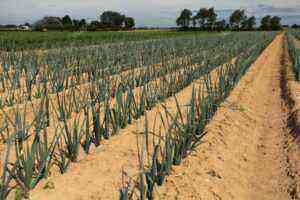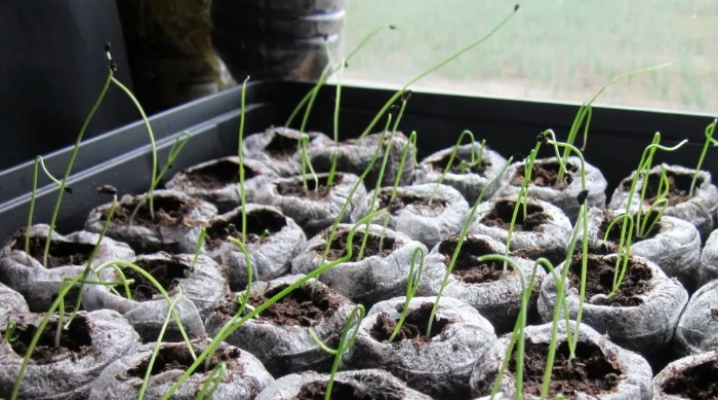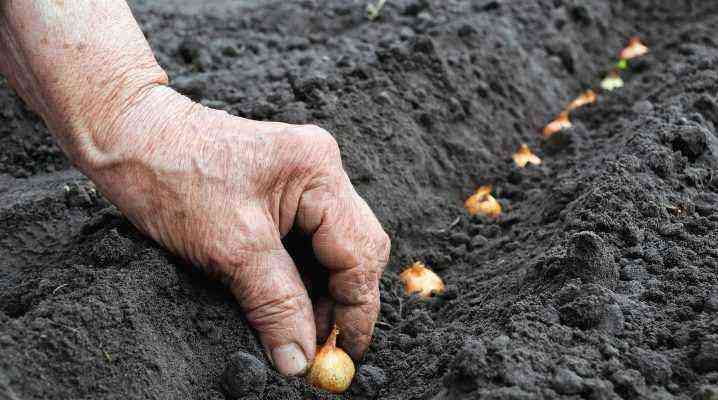The onion variety Centurion was bred by breeders in Holland. Its seeds germinate well, as the culture grows, it does not go to the arrows. Centurion is resistant to drought, high humidity and sudden changes in temperature, but its full development requires special conditions.
Variety description
Centurion refers to the early ripe varieties of onions. The maturation process takes 90 days. This is a productive variety: from 1 sq. m collect up to 4 kg of quality bulbs. The Dutch hybrid is not particularly whimsical in care, while possessing high palatability and resistance to many pests and diseases.
The main characteristics of the bow Centurion:
- the weight of one bulb is from 90 to 130 g;
- keeping quality – high; under normal conditions (5-10 degrees), the crop is stored for 6 to 9 months;
- frost resistance – sufficient, up to -4 degrees in the morning;
- taste – sharpness of medium severity, spicy notes;
- shape – elongated, ellipsoid.
The advantage of this variety is the absence of shooting. Centurion is also valued for the fact that during the storage period the onion loses no more than 5-7% of its weight, and the waste does not exceed 4%.
The onion bulb of the Centurion variety has a narrow neck, which dries quickly, and a small bottom. This feature protects the culture from infection with various diseases, and also reduces the amount of waste when using onions in cooking.
This hybrid can be grown both in household plots and on an industrial scale. Vegetables are equally well transported over long distances in nets and in bulk.
Centurion is suitable for eating raw, preserving, adding to salads from boiled and fresh vegetables.
Reproduction
Onion Centurion is propagated in several ways:
- from seeds;
- from 40-50 day old seedlings;
- receiving sevka.
The first two methods allow you to get an annual culture. This breeding method is applicable only in the southern regions, where the growing season lasts a long time.
Onion sets (two-year-old culture) are obtained by sowing nigella. It germinates for a long time, so before planting, the material must be checked for germination and carefully selected: all seeds must be the same in size and shape, dry, black. In order for the nigella to germinate better, it is recommended to soak it for a day in water at room temperature, then take it out and dry it. You need to start sowing when the seeds become loose.
The culture is harvested after the feathers begin to dry and lay on the ground. For the next planting, small bulbs with a diameter of 1-2 cm are selected. Larger sets are not used.
Preparing for planting
To get a good harvest, you need to select high-quality planting material. Sevok is less demanding on care, so it is suitable for growing turnips in large quantities.
Bulbs for planting should be dry, not rotten and in no case wet, without scratches and stains. The husk of each specimen should rustle when fingered.
Sevoc before planting can be disinfected with copper sulphate. To prepare the composition, you need to dilute a teaspoon of the substance in a bucket of water.
Seedlings should be planted in light and loose soil. The area where the Centurion bow is planned to be planted should be well lit. It needs to be cleaned of weeds, then fertilize (litter, humus). If necessary, take measures to reduce the acidity of the soil. Peat or sand should be added to clay soil.
At the final stage, the site is dug up to a full spade bayonet and the ground is leveled. All these activities are carried out in advance, in the fall, after the harvest.
Rules of landing
When choosing a time for sowing a crop, it is necessary to take into account the climatic features of the region. If the positive temperature is stable, then Centurion can be planted without fear of morning frosts.
Transplanting
You need to pay attention to such points:
- when sowing onions in temperature conditions of +2 degrees, seedlings will appear in a month, sometimes they have to be expected even longer;
- at a temperature within + 14-15 degrees, the onion will rise in 14 days;
- sowing a culture at + 20-22 degrees guarantees the emergence of seedlings in a week.
Onion seedlings of the Centurion variety are planted in the soil from the second half of April. During this period, the temperature for seedlings is comfortable, it is easier for them to take root in new conditions. Seedlings need to be placed in moist soil. The surface of the earth must be leveled with a rake. The distance between each row should be at least 30 cm. The depth of the furrow is 4-5 cm. Before moving the seedling into the ground, you need to dip its roots in a mixture of manure and clay.
Each seedling should be placed at a distance of 15 cm from each other. It is not necessary to deepen the seedlings too much, it is enough to place them 1 cm down.
After planting all the seedlings, you need to cover the rows with soil.
Planting sevkom
If Centurion is grown from sevka, then it is recommended to plant it at the end of April. Gardeners do this in the evening, choosing a cloudy day.
Sevok, as well as seedlings of a hybrid variety, are planted in rows, between each of which there should be a distance of 20 cm. Bulbs prepared for planting should be placed at a different distance between each instance. This indicator depends on the size of the set:
- if the diameter does not reach 1 cm, then there should be a distance of 5 cm between each onion;
- if the diameter of the set reaches 1,5 cm, then the indent will be 8 cm;
- specimens with a diameter of 2 cm or more are spaced at intervals of 10 cm.
Deepen the onions by 3 cm, cover with soil and mulch.
Care culture
Basic requirements for the care of Centurion onion varieties:
Watering
The beds should be regularly moistened during the growing season. This is necessary for the growth of leaves. Consumption – 8 liters per sq. m. As this period ends, watering should be reduced, and 20 days before harvesting should be stopped.
Warm water should be used for irrigation. It must be done carefully so as not to damage the pen.
Weeding and loosening
These activities improve air exchange, accelerate the process of cultural development. They need to be performed often – once a week or 10 days.
Weed removal
Pest plants retain moisture on the surface, which increases the risk of developing fungal diseases that adversely affect the condition of the crop and yield.
Regular garden inspection
It is necessary to monitor the state of the crop in order to notice the appearance of pests or the development of onion diseases in time.
Additional fertilizing
Onions of the Centurion variety require not only proper care, but also fertilization. It should be taken into account that it is impossible to use fertilizers of only one type, for example, organic or mineral.
An excess of organic matter contributes to the development of fungal diseases, due to which the planting material rots right in the soil. If too much mineral dressing is applied, the crop will suffer from rhizome burns, which will adversely affect the taste of the crop. The most suitable feeding scheme is the alternation of mineral and organic fertilizers.
The first top dressing should be done a week after planting the bulbs in the ground. As a fertilizer, you can use manure diluted in water or an organic complex.
Nitrogen (ammonium nitrate) is applied in the spring, and 40% of its norm must be used before planting, and the rest – during the growing season, in 2-3 doses.
Potassium (potassium sulfate) is also needed for crop yields. The total volume must be divided into 2 parts, one of which is applied to the soil in the autumn, before digging the site, and the second – during the growing season, dividing the top dressing for two doses.
Phosphorus (granulated superphosphate) is applied in the fall before digging (up to 70% of the volume), and in the spring (30%) before planting the planting material.
It is not recommended to scatter dry fertilizers; a solution must be prepared from them.
Useful tips for growing Centurion onions
Tips from experienced gardeners on caring for a Dutch hybrid:
- the culture does not need to be spudded, it is enough to loosen the earth around it;
- as the stem dries up, roots and leaves should be removed, leaving up to 5 cm of a false stem;
- it is not recommended to apply fresh manure, as this attracts pests and inhibits the development of the crop;
- do not overexpose ripe bulbs, because secondary growth may occur;
- if infected plants are found, they must be removed and burned so that the disease does not spread to a healthy crop.
Fighting diseases and pests
The most common onion disease Centurion is powdery mildew, which affects the leaves of the crop. The reason is high humidity. It is impossible to get rid of this disease, so you need to carefully monitor the landings and take the following preventive measures:
- regular monitoring of the condition of the leaves;
- scheduled treatment of culture with fungicides.
Also, this variety of onions is susceptible to Alternariosis. With this disease, old leaves are affected, young ones practically do not get sick. Spots appear on their surface, the edges of the leaves turn brown. If the disease progresses, the leaf dies off completely. To cope with the disease, you need to treat the culture with special compounds – fungicides.
Centurion is resistant to the most common onion diseases – neck rot and downy mildew.
The most common pests of the Dutch hybrid culture are the onion moth and the fly. These pests lay eggs under the upper scales of the onion. Developing larvae get deep into the bulbs and eat away the flesh from the inside. Moth eats greens from the inside. Prevention measures: autumn digging of the site on a full bayonet of a shovel, early sowing. If pests have already settled in the beds, they need to be treated with special insecticide preparations.
Harvesting and storage of crops
The signal to start harvesting is the cessation of new leaf growth. The most suitable time for harvesting Centurion onions is the second half of July. Collection is recommended in hot and dry weather.
After harvesting, the bulbs should be laid out in a dry, well-ventilated shaded area. They need to be turned over periodically.
You can store the crop for drying in the following ways:
- Laying in a circle. In this case, the bulbs should be outside, and the feathers should be inside the formed circle. The height should not exceed 50 cm. When laying onions, it is necessary to prevent contact of opposite leaves. This method of laying allows the leaves to dry faster.
- Narrow long rows.
After the crop is completely dry, all specimens must be cleaned from the ground, and dry leaves must also be removed. Each bulb should be carefully checked for moisture, scratches, signs of mold or signs of decay.
You need to sort the bulbs into groups, depending on the size:
- the smallest (up to 0,7 mm in diameter), not suitable for storage and used for planting in the soil in autumn;
- first class (7 mm-1,4 cm);
- second class (1,5 cm-2,2 cm);
- large (diameter 2,2 cm or more).
It is necessary to store the resulting crop in special storage facilities. The rooms must be ventilated. At home, onions can be folded in warm and dry places – in the attic or in the basement. It is also stored in boxes with holes, nylon nets, old stockings. Some gardeners store the harvested onion crop in sandbags or boxes, noting that it spoils less this way. Harvest can be stored in bulk.
If you follow the rules for storing onions, it successfully retains its external and taste qualities for six months or more.
Onions of the Centurion variety are valued for their taste, long-term storage and good tolerance for transportation. To achieve high crop yields, you need to properly prepare the planting material and soil before planting, as well as provide proper care for the developing plant.
